While science traveling in Florida I had the opportunity to visit the Holocaust Memorial in Miami Beach. In vivid contrast to the nearby bikini beach, this memorial brings to life unfathomable death. The contrast continues as what first appears to be a simple sculpture becomes on closer inspection a spectacularly complex look at the lives destroyed during the interminable years from 1933 to 1945 (which also happens to be the street numbers of Meridian Avenue where the memorial has stood since 1990).
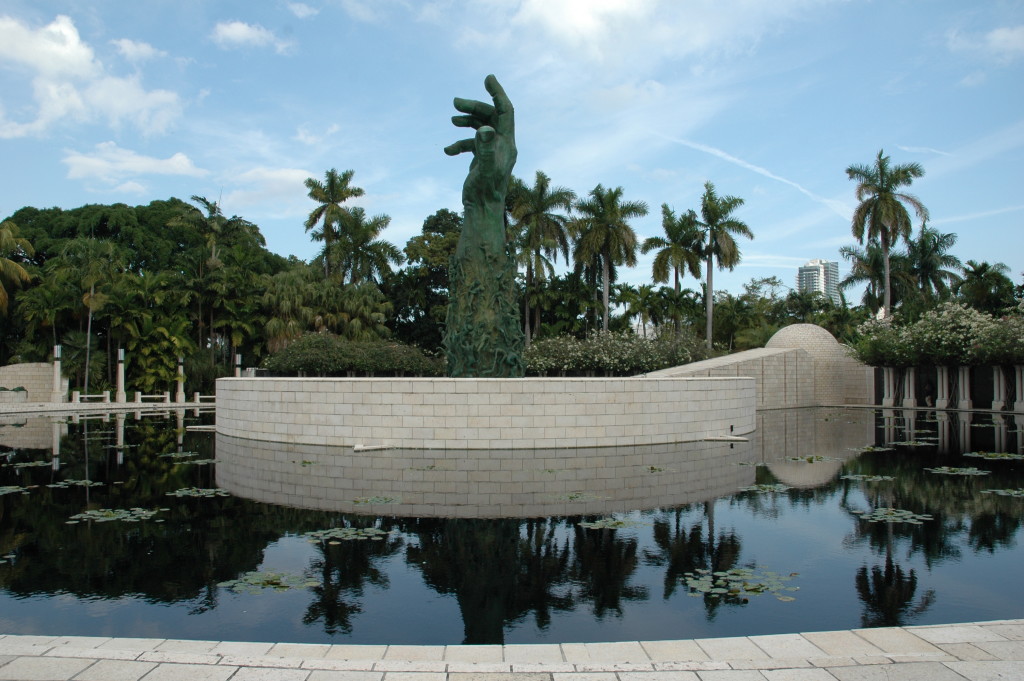
A single forearm reaches for the sky, surrounded by a wall, on what appears to be a peaceful island in a pond of water lilies. The initial reaction one gets is a combination of wonder at the four-story high harm and solemn calm at the relatively idyllic setting. And then one begins to focus more closely.
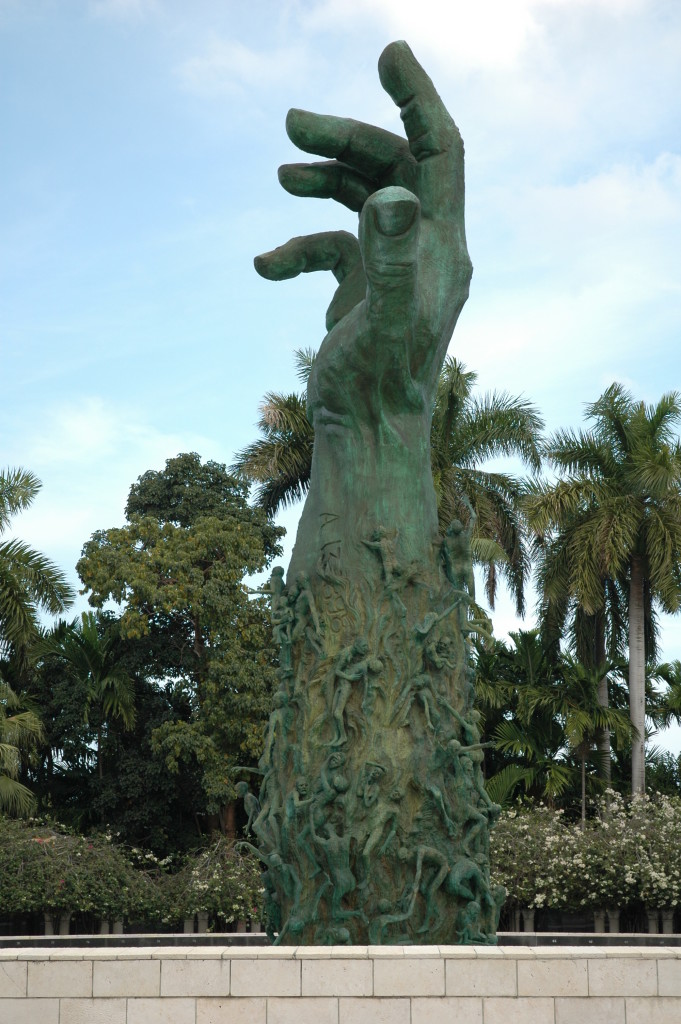
Climbing the arm are figures. Agonizing figures. Part of a tattooed number becomes visible, and one starts to become uncomfortable with the realization of what is happening…what had happened.
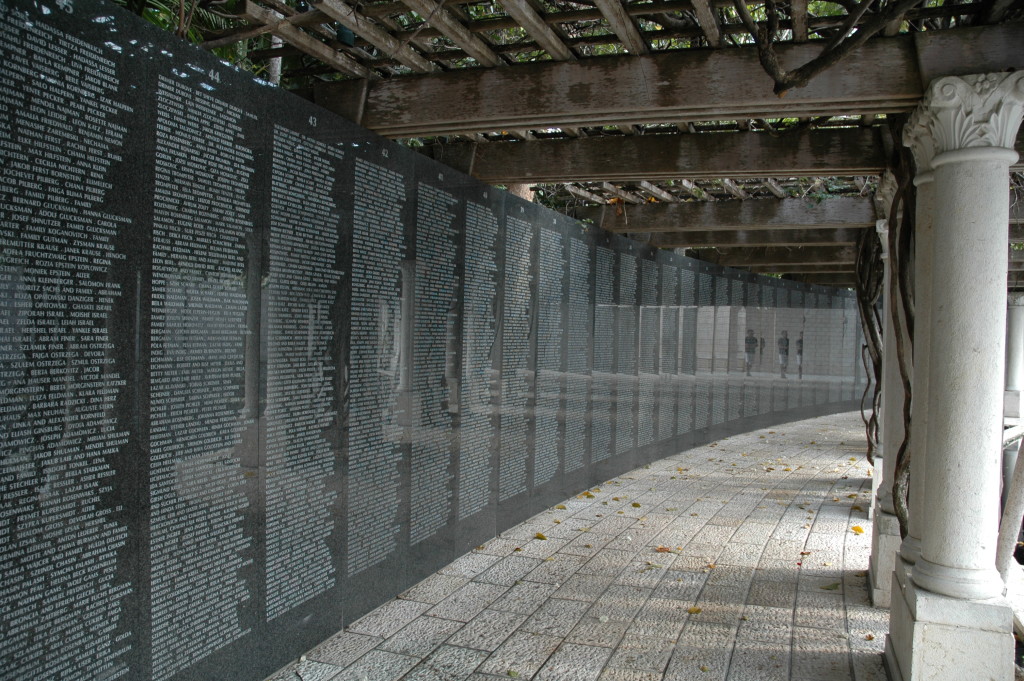
One wall around the back lists names of people who are no more, whose millions of lives were taken as an act of genocide. The list continues inside.
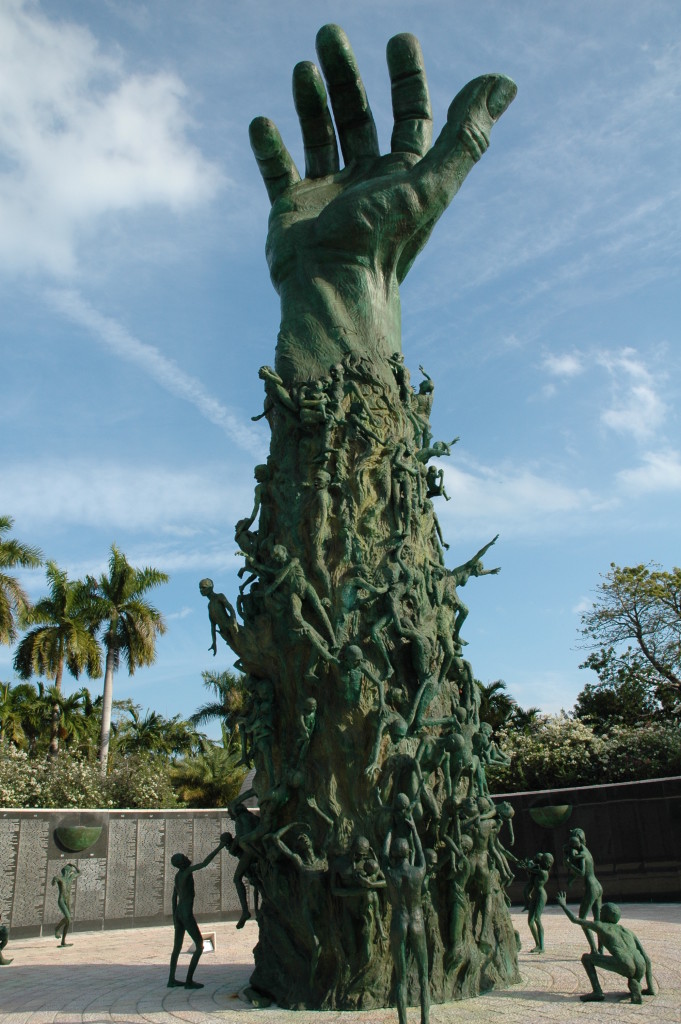
Yes, inside; visitors can take a short tunnel deep inside the wall. The tunnel signposts the various concentration camps – Bergen Belsen, Birkenau, Dachau, Buchenwald, Auschwicz and more. Once inside you see what is hidden from the initial view. The figures on the arm continue all the way to the Jerusalem stone foundation floor. The pain in their bodies and faces is almost unbearable, as one’s mind cannot grasp how anyone could survive the anquish, the despair, the unimaginable physical toll…or how anyone could inflict this agony upon others.
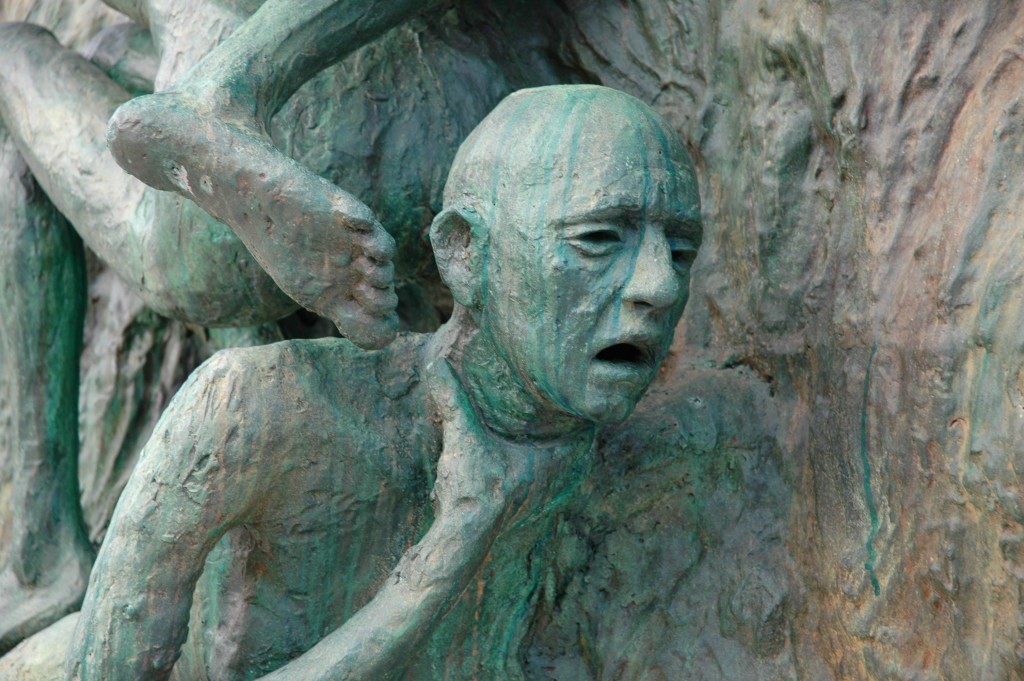
Walking among the figures, it’s difficult to hold back ones emotions. The old…
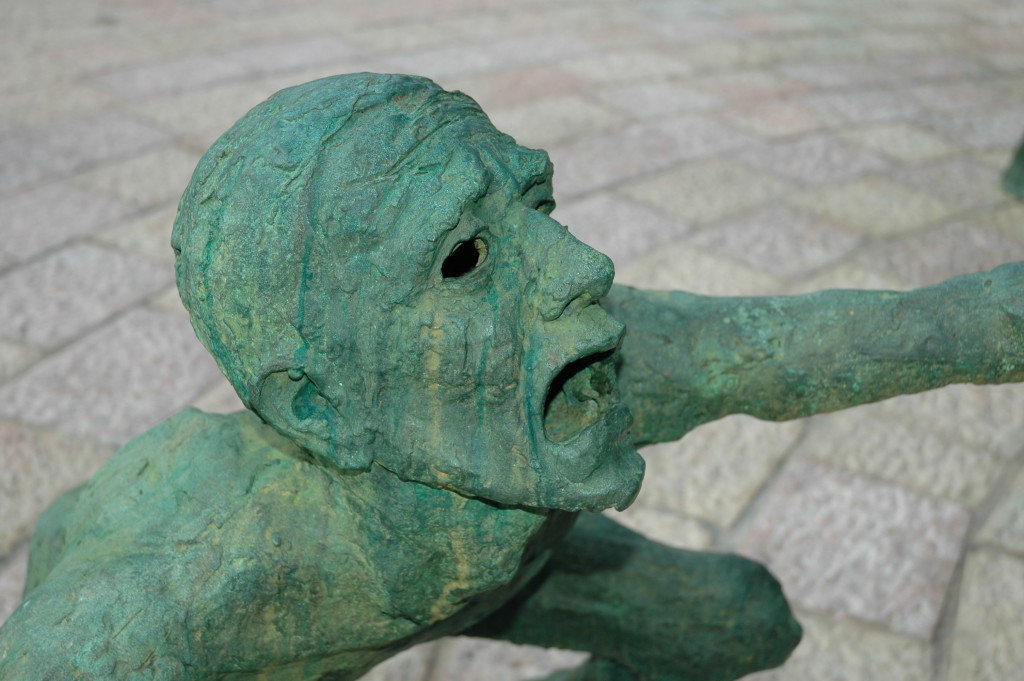
…the women…
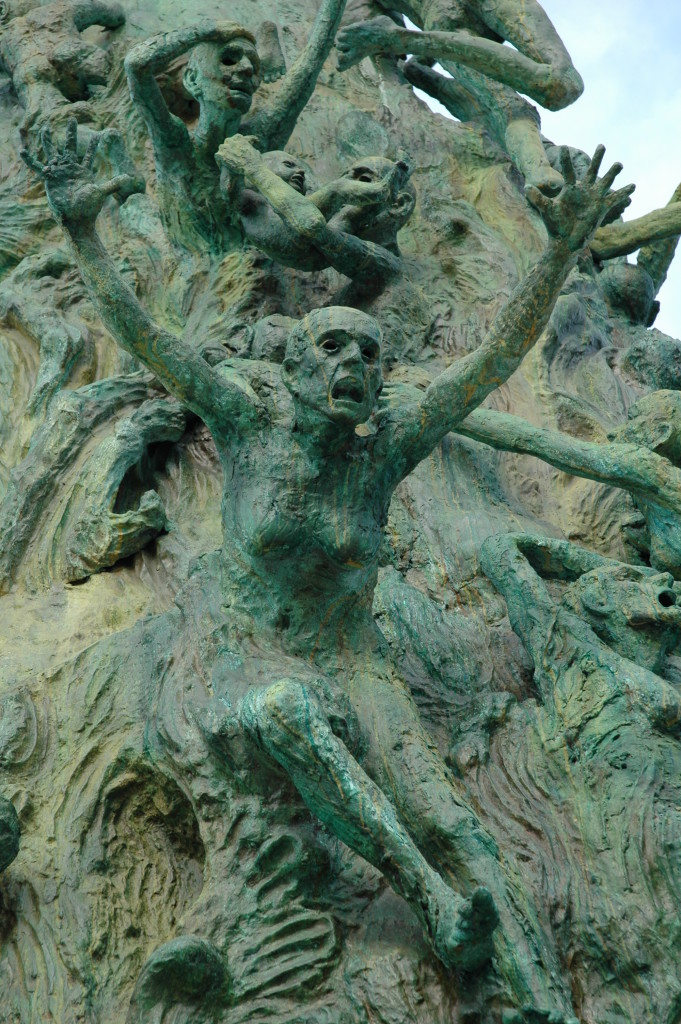
…and the young.
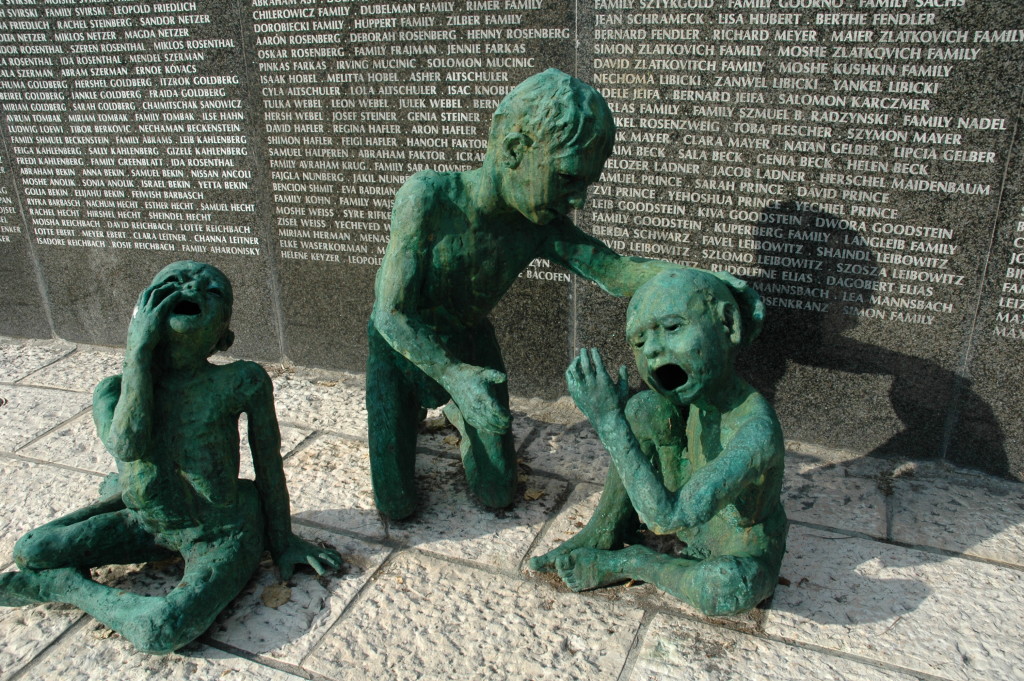
It’s a powerful monument that saps the energy from you as the magnitude of what it depicts settles into your comprehension. The memorial was anguishing for the community as well. Seen by some as misplaced so near the fun and sun of Miami’s South Beach, detractors called the sculpture “grotesque” and a “brutal intrusion on the cityscape.” And no wonder. Even today the Holocaust remains a difficult topic…a difficult memory that many would prefer not to think about. The sculptor, Kenneth Treister, described the process of creating the memorial:
“Imagine you’re in a concentration camp in Poland surrounded by the Nazis, no communication with the outside world and you’re suffering and you’re a martyr, you’re giving up your life. Each one probably died thinking that no one would ever care, no one would ever know, no one would ever remember.”
And remember we must, says Treister.
“Six million moments of death cannot be understood…
But we must all try.”
David J. Kent is an avid science traveler and the author of Lincoln: The Man Who Saved America, now available. His previous books include Tesla: The Wizard of Electricity and Edison: The Inventor of the Modern World (both Fall River Press). He has also written two e-books: Nikola Tesla: Renewable Energy Ahead of Its Time and Abraham Lincoln and Nikola Tesla: Connected by Fate.
Check out my Goodreads author page. While you’re at it, “Like” my Facebook author page for more updates!
Follow me by subscribing by email on the home page. Share with your friends using the buttons below.










